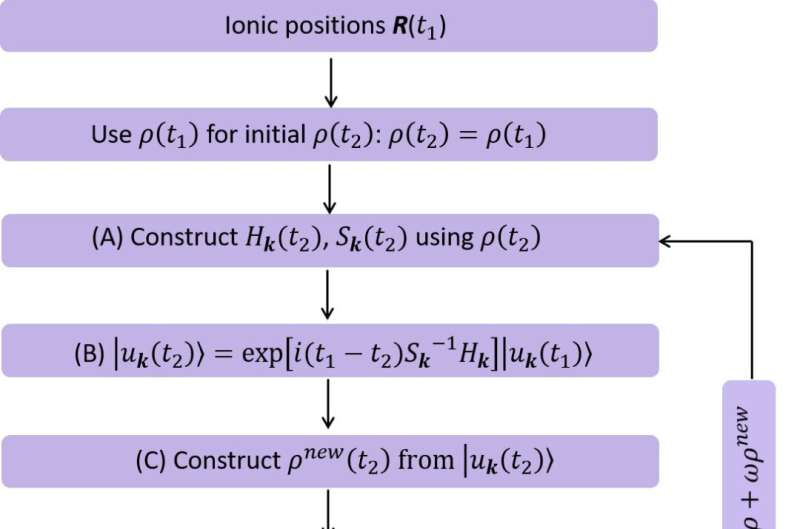Peering into precise ultrafast dynamics in matter

A team of researchers from Beijing led by Prof. Dr. Sheng Meng has succeeded in developing predictive first-principles approaches for investigating precise ultrafast processes in matter. The method, named TDAP (time-dependent ab initio propagation), aims at providing robust dynamic simulations of light-induced, highly nonlinear phenomena which are at the atomic and molecular level and occur within a few femtoseconds (10-15 sec) or even attoseconds (10-18 sec). Fundamental interactions among different degrees of freedom can now be understood more precisely, purely based on quantum mechanical principles, according to the researchers. The results of the research have been published in the journal Ultrafast Science and are expected to foster a variety of further developments in related scientific fields.
The team has spent a decade working on extending first-principles theoretical methods into modeling dynamical responses of quantum materials to external fields (e.g., electric, magnetic and laser fields), which are of great interest these days, but the detailed information remains rather limited. The generation and synthesis of intense ultrashort light pulses with a controlled electric field and associated phases provide a promising route to dynamically decouple and manipulate the microscopic interactions with an unprecedented time resolution. Therefore, the laser-induced nonequilibrium phenomena have attracted enumerated attention from a broad range of scientific fields.
The theoretical treatment of the time-dependent nonadiabatic phenomena induced by laser is a formidable challenge at many levels, ranging from the description of the excited states to the time propagation of the corresponding physical properties. In TDAP, time-domain quantum evolution of electronic states with the classical approximations of nuclear motions is treated concurrently, which has enabled real-time tracking of coupled electron-nuclear dynamics without having to resort to the perturbation theory. The use of numerical atomic orbital has provided flexibility and credibility to do high-accuracy, large-scale simulations in a wide range of quantum systems with a moderate computational cost.
The method has been applied to the exploration of strong field physics and decoding vast information underneath the experimentally detected signals. By comparing the theoretical and experimental results, the approaches have been demonstrated effective and efficient in treating ultrafast quantum dynamical processes involving complex interactions among photons, electrons and phonons under laser excitation conditions. The development of this method helps understand the excited state dynamics in the fields of photocatalysis, photovoltaic and optoelectronic device design, attosecond pulse synthesis and applications, etc.
More information: Mengxue Guan et al, Theoretical Insights into Ultrafast Dynamics in Quantum Materials, Ultrafast Science (2022). DOI: 10.34133/2022/9767251
Provided by Ultrafast Science




















